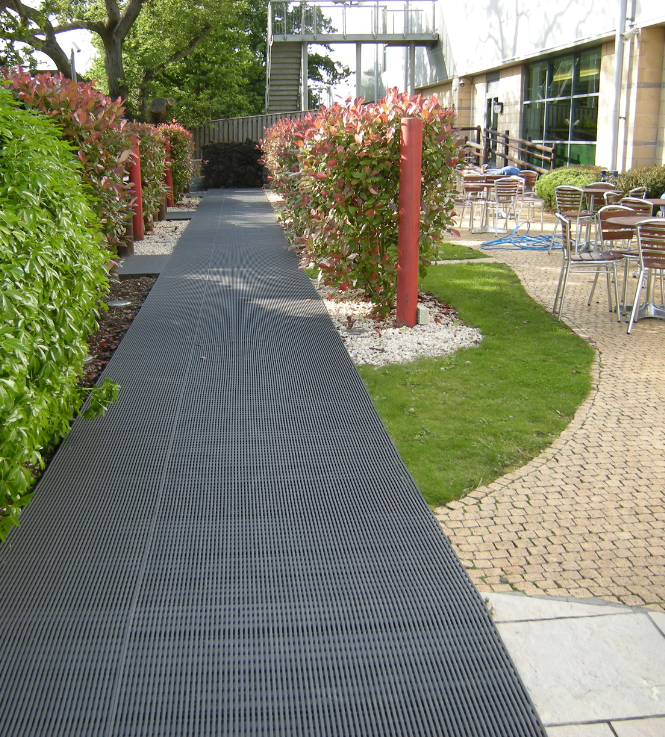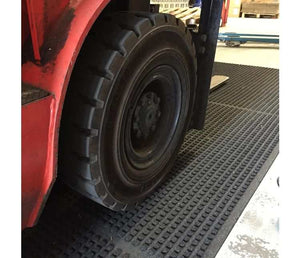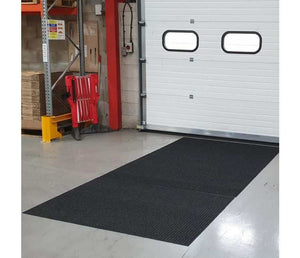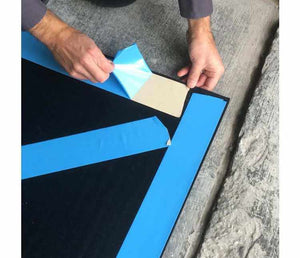indoor mat, carpet, mat, coir, cotton, furniture, bathroom, interior design, kitchen, bedroom, room, shoe, bed, floor, jute, linen, lighting, mud, moisture, chair, united kingdom, textile, email, polyester, environmentally friendly, washing machine, fiber, price, scraper
Are memory foam indoor mats comfortable?
Yes, memory foam indoor mats are generally very comfortable. They’re specifically designed to offer cushioning and support underfoot, which makes them ideal for areas where you stand for extended periods, like the kitchen, bathroom, or near entrances.
Here are a few reasons why they’re considered comfortable:
Cushioning effect: The memory foam contours to the shape of your feet, providing a soft and supportive surface.
Fatigue reduction: They can help reduce foot, leg, and back fatigue, especially on hard floors.
Warm underfoot: Unlike tile or wooden floors, memory foam mats feel warm and cosy, particularly in colder months.
Non-slip backing: Most have a non-slip base, keeping them secure and adding a layer of safety and stability.
They're not just practical—they also add a touch of luxury and comfort to your indoor space.
Do indoor mats have a warranty or guarantee?
Indoor mats often come with a warranty or guarantee, but it depends on the manufacturer or retailer. Many reputable suppliers offer some form of protection to give customers confidence in the quality and durability of their products.
Here’s what’s typically covered:
- Manufacturer’s warranty: This usually covers defects in materials or workmanship for a set period, such as one or two years.
- Satisfaction guarantee: Some retailers offer a money-back guarantee if you’re not satisfied within a certain timeframe.
- Wear resistance: High-quality mats may come with guarantees against excessive wear or flattening over time.
It’s important to check the specific terms and conditions provided by the retailer, including what’s covered, how long the warranty lasts, and how to make a claim if needed.
How often should I clean my indoor mat?
How often you should clean your indoor mat depends on where it’s placed and how much foot traffic it receives. As a general guideline:
- **High-traffic areas (e.g. entrances, kitchens):** Clean at least once a week to remove dirt, dust, and moisture.
- **Low-traffic areas (e.g. bedrooms, under furniture):** A thorough clean every two to three weeks is usually sufficient.
- **Spills or stains:** Clean immediately to prevent staining and damage.
Regular vacuuming will help maintain appearance and hygiene, while occasional deep cleaning (such as washing or spot-treating) will extend the mat’s lifespan. Always follow the care instructions provided by the manufacturer to avoid damage.
Do indoor mats come with anti-slip backing?
Yes, many indoor mats come with anti-slip backing to help keep them securely in place on smooth surfaces like tile, laminate, or hardwood floors. This feature is especially important in areas where slips and trips are more likely, such as kitchens, bathrooms, and entrances.
The most common types of anti-slip backing include:
Rubber or latex backing – provides good grip and stability.
Thermoplastic rubber (TPR) – often used for its durability and resistance to cracking.
Suction or gripped textures – found on lightweight mats for extra hold.
If safety and stability are a concern, especially in homes with children, elderly residents, or pets, choosing a mat with a reliable non-slip backing is a smart option.
Can I use an indoor mat on a hardwood floor?
Yes, you can use an indoor mat on a hardwood floor, but it's important to choose the right type to avoid damage to the surface. Some mats are specifically designed to be safe for use on hardwood and other delicate flooring types.
Here are a few things to consider:
Non-slip backing: Look for mats with a non-slip backing that won’t leave marks or cause discolouration. Natural rubber or thermoplastic rubber (TPR) are good options.
Avoid PVC or latex if unsure: Some backings can react with floor finishes over time, especially if the mat is left in place for long periods.
Breathable materials: Choose a mat that allows some air circulation underneath to prevent moisture build-up, which can warp wood flooring.
Clean both surfaces regularly: Dust and grit trapped under a mat can scratch the floor, so keeping the mat and the floor underneath clean will help protect the surface.
Always check the manufacturer’s recommendations for both the mat and your flooring to ensure compatibility.
How do I choose the right indoor mat for my home?
Choosing the right indoor mat for your home depends on a few key factors, including where it will be used, what purpose it needs to serve, and your personal style preferences. Here’s a simple guide to help you decide:
Location
Consider where the mat will be placed:
Entrance or hallway: Look for a durable, absorbent mat that traps dirt and moisture.
Kitchen: Choose a mat with anti-fatigue properties and easy-to-clean materials.
Bathroom: Go for a soft, quick-drying mat with non-slip backing.
Living areas or bedrooms: Opt for comfort and style – think memory foam or plush materials.
Material
The material affects comfort, durability, and maintenance:
Coir: Great for scraping dirt off shoes (ideal for entrances).
Microfibre: Highly absorbent and soft underfoot.
Memory foam: Offers extra cushioning – good for comfort-focused areas.
Rubber or vinyl: Durable and easy to clean – often used in utility areas.
Size and shape
Make sure the mat fits the space properly. Measure the area beforehand and choose a size that covers enough surface without obstructing doors or walkways.
Backing
Non-slip backing is essential for safety, especially on smooth floors like tiles or wood.
Style and colour
Choose a design that complements your interior décor. Darker colours hide dirt better, while lighter shades can make a space feel brighter.
Ease of cleaning
If the mat will be used in high-traffic or messy areas, pick one that’s machine washable or easy to wipe clean.
By considering these factors, you can find a mat that not only looks good but also performs well for its intended use.
Are indoor mats durable enough for daily use?
Yes, indoor mats are generally designed to withstand daily use, especially when chosen according to their intended purpose and location within the home. However, durability can vary based on the quality of materials and construction.
Here’s what to look for in a durable indoor mat:
High-quality materials: Mats made from nylon, polyester, coir, or rubber tend to be more hard-wearing and resilient to foot traffic.
Strong backing: A robust non-slip backing helps prevent shifting and curling, which can lead to wear and tear over time.
Edge binding: Mats with stitched or reinforced edges are less likely to fray, extending their lifespan.
Moisture and stain resistance: These features are especially important for mats in kitchens, entrances, or utility rooms.
With proper care—such as regular cleaning and occasional rotation—most well-made indoor mats will hold up well to daily use, even in busy households.
What is the best material for an indoor entrance mat?
Nylon
Excellent at trapping dirt and moisture
Durable and resilient, ideal for high-traffic areas
Easy to clean and dries quickly
Polypropylene
Highly stain-resistant and moisture-tolerant
Often used in scraper mats to remove debris from shoes
Cost-effective and available in many styles
Coir (natural coconut fibre)
Very effective at scraping mud and dirt off footwear
Eco-friendly and rustic in appearance
Best suited for covered entranceways, as it can hold moisture
Microfibre
Extremely absorbent—ideal for wet weather
Soft underfoot and often machine washable
Great for households with pets or children
Rubber-backed mats
Combine well with other fibres for grip and safety
Prevent slipping and protect flooring beneath the mat
For a balance of performance and practicality, many choose a nylon or polypropylene mat with a rubber backing—these are durable, effective at trapping dirt and moisture, and safe on most flooring types.
Do indoor mats come with a return or exchange policy?
Yes, most indoor mats do come with a return or exchange policy, especially when purchased from reputable retailers. However, the exact terms can vary depending on the store or brand.
Here’s what’s commonly offered:
Standard return period: Many retailers allow returns within 14 to 30 days of purchase, provided the mat is unused and in its original condition.
Exchanges: If the mat is the wrong size, colour, or doesn’t suit your space, you can usually exchange it within the return window.
Custom mats: Mats that are personalised, cut to size, or made to order may not be eligible for return or may incur a restocking fee.
Proof of purchase: A receipt or order confirmation is typically required for any return or exchange.
Return shipping: For online purchases, you may need to cover the return postage unless the item is faulty or sent in error.
It’s best to check the specific return policy of the retailer before buying, so you’re aware of any conditions or limitations.
Can I wash my indoor mat in a washing machine?
Machine-washable mats:
Microfibre: Most microfibre mats can be safely washed in a washing machine. Use a gentle cycle with cold water to prevent damage.
Cotton: Cotton mats are generally machine washable. They may shrink, so wash in cold water and air dry.
Nylon or Polyester: These materials are often machine washable, but it’s best to use a gentle cycle and avoid hot water.
Mats that may not be machine washable:
Coir mats: These are typically not machine washable due to their natural fibres. Instead, shake them out or vacuum them.
Rubber-backed mats: The rubber backing may be damaged in a washing machine. It’s better to spot clean or wipe these mats with a damp cloth.
Care tips for machine-washable mats:
Use mild detergent and avoid fabric softeners, which can affect absorbency.
Air dry the mat instead of using a dryer to prevent shrinking or warping.
Always follow the manufacturer’s care instructions for the best results and to maintain the longevity of your mat.
Can I use an indoor mat in a commercial setting?
Yes, you can use an indoor mat in a commercial setting, but it's important to choose one that is durable enough to handle high traffic and the specific needs of the space.
Here are some factors to consider:
Durability:
Choose mats made from strong, resilient materials such as nylon, rubber, or polypropylene, as these can withstand heavy foot traffic and frequent use.
Size and coverage:
Depending on the commercial space, you may need larger mats or multiple smaller mats to cover entrances, walkways, or high-traffic areas.
Functionality:
Anti-fatigue mats: For areas where employees stand for long periods, such as reception desks or cashier stations, anti-fatigue mats can provide added comfort.
Dirt and moisture control: Mats with good dirt-trapping properties, such as rubber-backed mats or mats with bristles, are ideal for keeping the floors clean and safe.
Ease of maintenance:
Commercial settings often require frequent cleaning, so choose mats that are easy to wash, either machine washable or simple to spot clean and maintain.
Safety:
Make sure the mat has a non-slip backing to prevent accidents in high-traffic areas, especially in environments prone to moisture, like kitchens or bathrooms.
When chosen carefully, indoor mats can provide both practical and aesthetic benefits in commercial environments.
What is the ideal size for an indoor welcome mat?
The ideal size for an indoor welcome mat depends on the size of the entrance or area where it will be placed. Here are some general guidelines to help you choose the right size:
Standard entryway (single door):
A mat size of 40 cm x 60 cm to 45 cm x 75 cm is usually perfect for standard single-door entrances. It provides enough coverage to catch dirt and moisture without being too large for the space.
Double door entry:
For a wider double door entrance, a mat size of 60 cm x 90 cm to 75 cm x 120 cm works well. It provides full coverage across the entry and helps catch dirt from both sides.
Larger or open entryways:
For larger or more open areas, you may want to go with a mat that’s 120 cm x 180 cm or larger to create a more substantial presence and provide enough space to wipe shoes comfortably.
Make sure the mat fits within the frame of the door and doesn't obstruct the door from opening or closing. You also want to consider the design, so it complements the overall look of the entrance.
Are indoor mats easy to install and remove?
Yes, indoor mats are generally easy to install and remove. Most indoor mats simply need to be placed in the desired location without any special installation process. The key things to consider are:
Installation:
Just position the mat in the chosen area. Mats with a non-slip backing will stay in place without needing any additional steps.
Removal:
You can easily pick up and move the mat whenever you need to clean or change its position. For mats with rubber or adhesive backing, just peel them off gently without causing damage to the floor.
Cleaning:
Depending on the material, many mats are machine washable or can be easily vacuumed or spot cleaned.
If you're looking for mats that stay in place but are easy to move, when necessary, non-slip backed mats are usually the most convenient choice.
Are indoor mats resistant to water and moisture?
Yes, many indoor mats are designed to be resistant to water and moisture, though this can vary depending on the material and construction of the mat. Some mats are better suited for wet conditions than others. Here are some general points to consider:
Water-resistant materials:
Mats made from synthetic fibres like polypropylene, polyester, or rubber are often water-resistant and help keep moisture from soaking through. These materials also tend to dry quickly.
Absorbent mats:
Mats made from microfibre or cotton are highly absorbent, making them ideal for trapping moisture from wet shoes or feet. However, they can hold onto moisture, so they need to be cleaned and dried regularly to avoid mould or mildew growth.
Coir mats:
Natural fibre mats, such as coir, can absorb moisture but may not be as effective in very wet conditions. They’re better for light moisture and dirt but can deteriorate if exposed to excessive water.
Rubber-backed mats:
Rubber-backed mats can offer some water resistance and prevent moisture from reaching the floor beneath. However, if they stay wet for long periods, they may not dry as easily.
To maximise the life of your mat and prevent moisture issues, it’s best to choose one suited to your environment and to clean and dry it regularly.
Are indoor mats suitable for high-traffic areas?
Yes, many indoor mats are suitable for high-traffic areas, but it's important to choose one made from durable materials that can withstand heavy use. Mats designed for high-traffic areas are typically constructed from strong, resilient fibres such as nylon, polypropylene, or rubber, which can endure frequent foot traffic without losing their effectiveness.
Key features to look for in a mat for high-traffic areas include:
Durability:
Choose mats made from materials like nylon, rubber, or coir, as these can handle constant wear and tear.
Non-slip backing:
A non-slip backing will help keep the mat in place and prevent it from shifting or bunching up underfoot.
Ease of cleaning:
High-traffic mats will need regular cleaning, so select one that is easy to vacuum, spot clean, or machine wash.
Absorbency:
If the area is exposed to dirt or moisture, select a mat with absorbent qualities to trap debris and water effectively.
When selected carefully, indoor mats can be very effective in high-traffic areas, providing both durability and functionality.






























